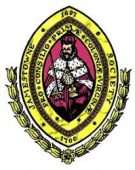By Martha W. McCartney
 |
| “Old Christmas” was not an easy time. |
Although nothing is known about the Virginia colonists’ very first Christmas, commemorated on January 6, 1608 (“Old Christmas”), it is likely that the cold and hungry settlers huddled together in the fort at Jamestown marked the occasion with a religious service. But sickness and the lingering presence of death left the colonists little cause for merriment or stamina for celebration. The very next day, the fort burned.
Thanks to Captain John Smith’s narrative, we have a fleeting glimpse of the colonists’ second Christmas in the New World. On December 29, 1608, Smith (then president of the colony) and a dozen gentlemen and soldiers set sail from Jamestown in the Discovery, catching the outbound tide. Close behind was another small boat that carried 25 men. The blustery winter wind tugged at the vessels’ sails, propelling them downstream toward the mouth of the James. Smith and his companions were bound for the York River village of the native emperor Powhatan, who ruled the Indians of Virginia’s coastal plain. Powhatan knew that the Jamestown settlers were famished and offered to exchange a shipload of corn for some weapons, trinkets, a hen and a rooster, and an English-style house. Smith willingly accepted the offer, for the colonists were in desperate need of food. However, he was prepared to take it by force, if necessary.
Some twenty miles below Jamestown, Captain Smith and his companions paused overnight at the village of the Warraskoyack Indians. They availed themselves of the natives’ hospitality and then set out at dawn, despite gathering storm clouds. Soon, frigid gusts hurled sleet and snow into their faces and glazed their sailing vessels with ice. They turned toward shore to wait out the storm and came to land near the mouth of the James.
 |
| A Christmas feast of Indian foods was a generous gift to Captain John Smith and his fellow adventurers. |
Smith and his group sought refuge with the Kecoughtan Indians, whose village lay upon a large open plain near Old Point Comfort. The natives welcomed their unexpected guests with special gifts in their hour of need: food, shelter, and the warmth of human kindness. The Englishmen spent Christmas at Kecoughtan, partaking freely of the Indians’ generosity. Smith later wrote that “the extreme wind, raine, frost and snow caused us to keep Christmas among the Salvages.” He added that “wee were never more merrie nor fedd on more plentie of good oysters, fish, flesh [meat], wild foule and good bread.” He also said that he and his companions had “never had better fires in England then [sic] in the drie warm smoaky houses of Kecoughtan.” Thus united by the bond of human kinship, the first English colonists and Virginia’s natives shared their Creator’s bounty.
About the author:
Martha W. McCartney is a research historian and author of several books relating to the early settlement of Virginia. She was the featured speaker at the October meeting of the First California Company of the Jamestowne Society. Her books include Virginia Immigrants and Adventurers 1607-1635: A Biographical Dictionary, and Jamestown: American Legacy.


John Smith is the most recognized chronicler of the founding and establishment of Jamestown. He probably could have recorded the observance of that first Christmas, except that he then was a captive of Powhatan. He was also, lucky to have observed it in 1608, as he was only prevented from being hanged by the timely arrival of Newport and the First Supply the day before his scheduled execution.
Great article! Thank you. Happy Holidays to all.
who drew old christmas
Anonymous:
Please see Scott, David B. A School History of the United States. New York: Harper & Brothers, 1883.